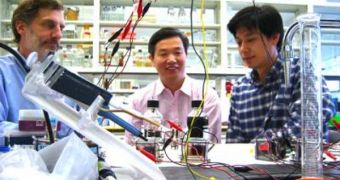Truly, the world of microbes and bacteria is one of many wonders, as naturalists say. It would appear that most species of such microorganisms have been “born” with special skills that make researchers' eyes water. For instance, a new discovery pinpoints a species of microbes that is able to turn water and carbon dioxide into methane, when subjected to electrical current. All of this is done in a completely environmentally friendly manner, in that no greenhouse gases are released in the process. According to Penn State engineers, the find could lead to the creation of portable power sources with a zero impact on ecosystems and the biosphere.
“We were studying making hydrogen in microbial electrolysis cells and we kept getting all this methane. We may now understand why. All the methane generation going on in nature that we have assumed is going through hydrogen may not be. We actually find very little hydrogen in the gas phase in nature. Perhaps where we assumed hydrogen is being made, it is not,” Penn State Kappe Professor of Environmental Engineering Bruce E. Logan says.
Methanogenic microorganisms are known to produce methane naturally in swamps and marshes, but biologists have thus far believed that these are simply byproducts of decomposing organic materials, or of hydrogen processing. It may now turn out that this is not the case, as very small amounts of hydrogen have been detected during artificial electrolysis trials of obtaining the precious gas.
The microbe known as Archaea is able to use the same electrical input that regular microorganisms do to create hydrogen from organic matter so as to produce methane from just water and carbon dioxide. The latter has been associated with the growing effects of global warming and climate change and, thanks to new policies soon to be enacted, will be considered a pollutant in the future. The find is detailed in this week's issue of the journal Environmental Science and Technology.
“We have a microbe that is self perpetuating that can accept electrons directly, and use them to create methane. The only way to get current at the voltage we used was if the microbes were directly accepting electrons. The process does not sequester carbon, but it does turn carbon dioxide into fuel. If the methane is burned and carbon dioxide captured, then the process can be carbon neutral,” Logan concludes.

 14 DAY TRIAL //
14 DAY TRIAL //